On May 1st a sunspot began rotating into view on the Sun’s eastern limb. Nobody knew it then but that sunspot would go on to produce the greatest auroral display of this generation.
Setting The Stage
AR3664 began its journey across the Sun’s southern hemisphere as a small sunspot. In those first days of May the attention was focused on AR3663, a larger sunspot in the northern hemisphere that was producing multiple X-class solar flares. But on May 7-8th AR3664 erupted into a gigantic sunspot, comparable in size to the Carrington sunspot of 1859 which produced one of the largest geomagnetic storms in history.
source: https://soho.nascom.nasa.gov/
Now more than 124,000 miles across, AR3664 began unleashing X-class solar flares with Coronal Mass Ejections (CMEs) in rapid succession. Watching all of this unfold was NOAA’s Space Weather Prediction Center (SWPC). They saw that the trailing CME was traveling faster than the leading CMEs, a situation that would produce a cannibal CME. This prompted the SWPC to issue a Severe Geomagnetic Storm Watch for May 11th UTC which was Friday evening here in the US. With Kp-indicies expected to reach 8-9, an auroral display was possible as far south as Alabama. The stage was set.

Attending The Show
Historically an auroral display in the southern US occurs low on the northern horizon. With that in mind I decided to watch from the Gardens Overlook in FDR State Park. Arriving just before sunset I had plenty of time to kill so I took a panorama of the view.

scroll left or right in the image below

I also kept an eye on the SpaceWeatherLive app which showed the Kp-index was occasionally spiking to 9. An auroral event was looking promising.
A Pre-Show Act
Around 21:38 I noticed what I first thought was a high altitude aircraft contrail. Then I noticed the contrail was a string of lights – a Starlink satellite train! I knew there had been a launch earlier from Vandenberg but I had not researched if there would be any visible passes. I had to scramble to get the camera configured to capture the satellites.
The Show Begins
At 21:45 I took my first photo with a Canon EOS R6 Mark II and 24-105MM L lens. That photo showed a faint red streak to the right of the moon.
You can see all of the photos better by viewing the larger image which displays on a dark background.

Since nothing was visible to the naked eye I thought perhaps it was a lens flare, but I could not find a source. I took a few more photos and the red streak was in every photo. I was still doubting this was the aurora because it was too high above the horizon (the moon was 26° above the horizon and this red streak was extending above the moon). So I decided to increase the exposure time.

No doubt about it, that was an aurora! By now it was faintly visible to the naked eye. I jumped into full photography mode trying different exposures and compositions. I decided the field of view was too limited with the 24-105mm lens so I swapped to a wider lens, an old EF-S 18-55mm (thank you Canon for developing a lens mount adapter for the full frame R6 that can work with both EF and EF-S lenses).
After twelve minutes I began noticing auroral pillars on the right side of the frame that were also visible to the naked eye. What happened next will be engrained in my brain forever.

The Main Act
At 22:04 the northern sky exploded in a brilliant auroral display. To add a bit of flair, the International Space Station passed thru between 22:12 and 22:13 (it is the bright streak at the top of the photos).

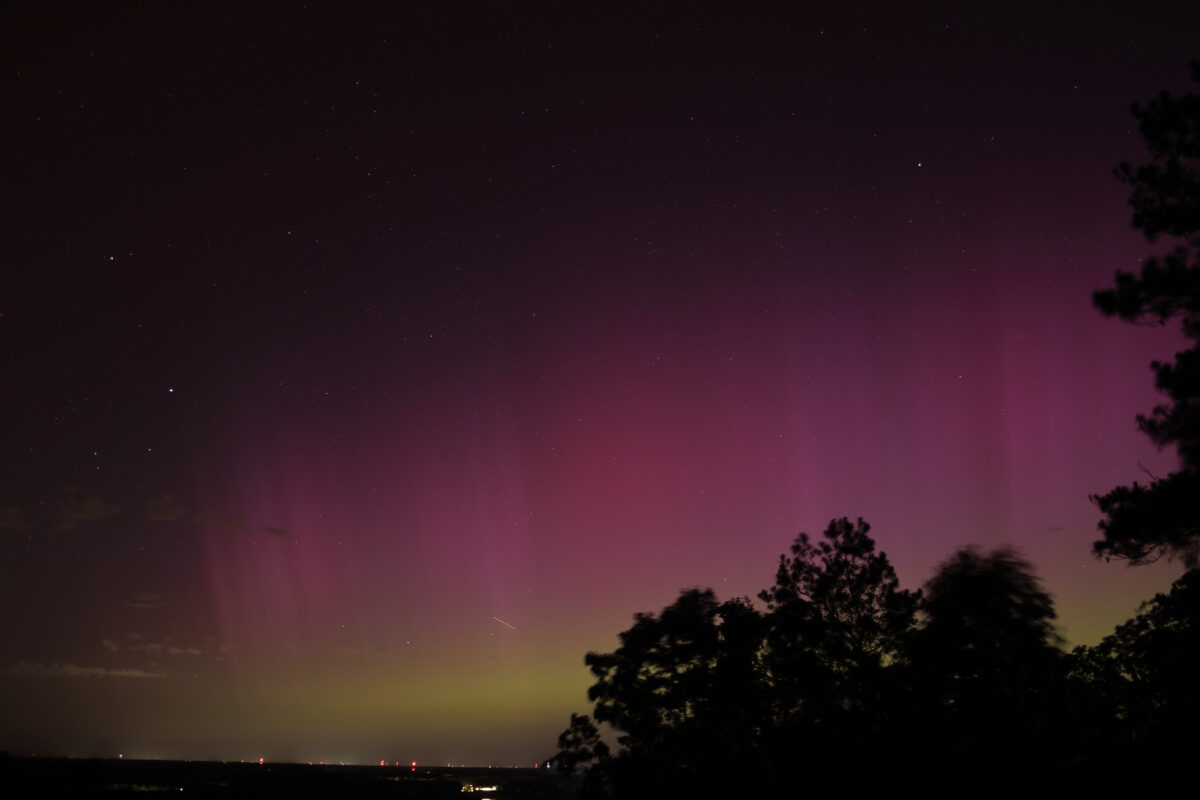
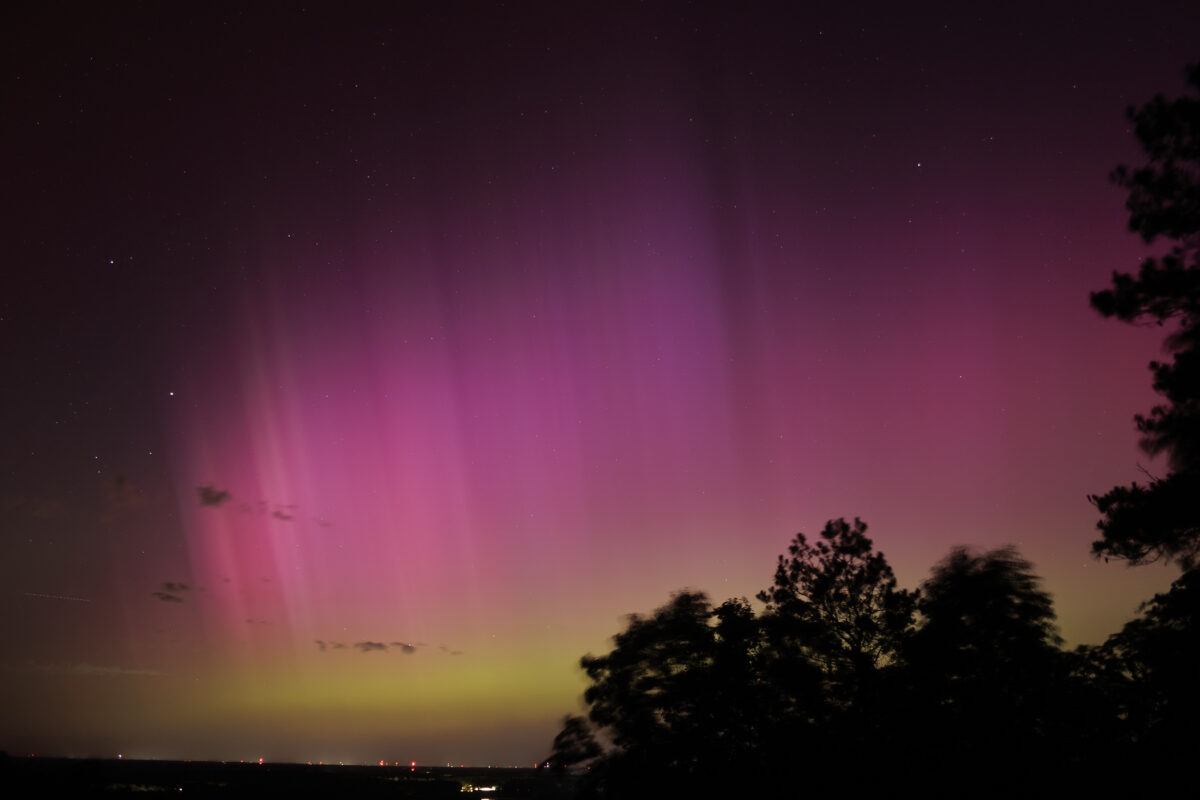


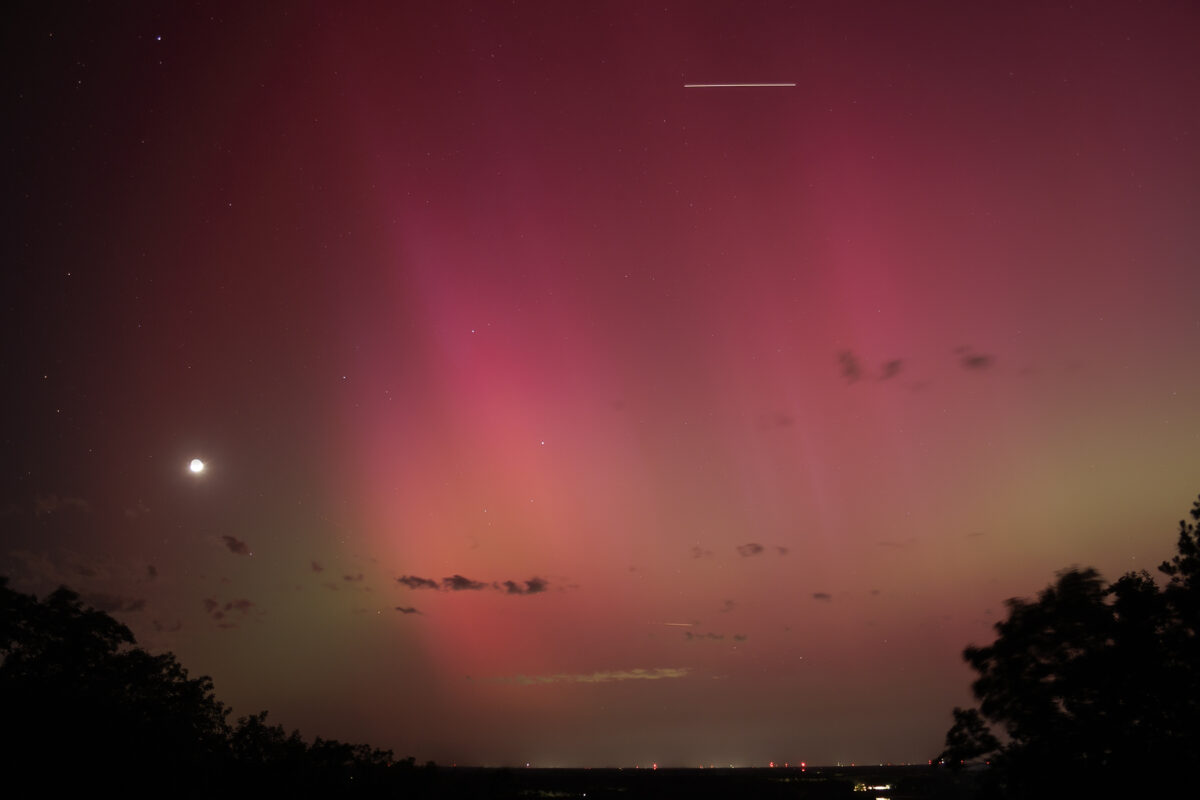
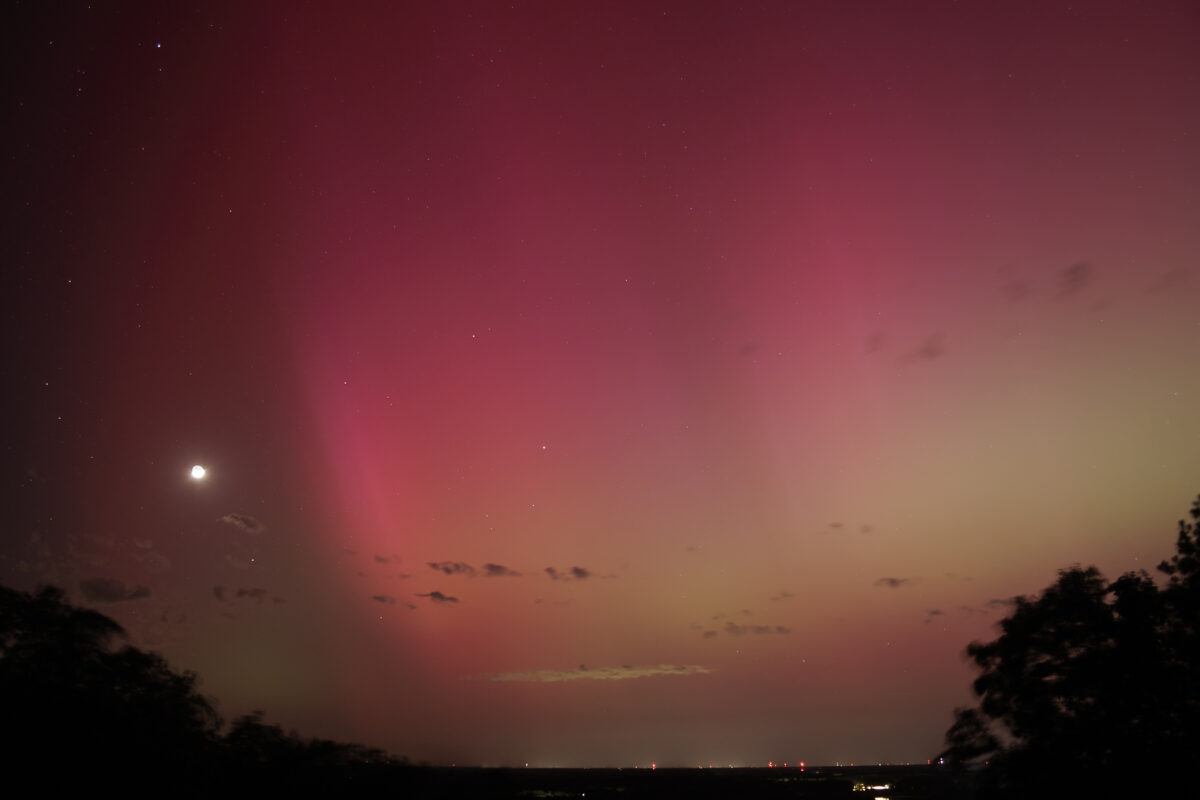

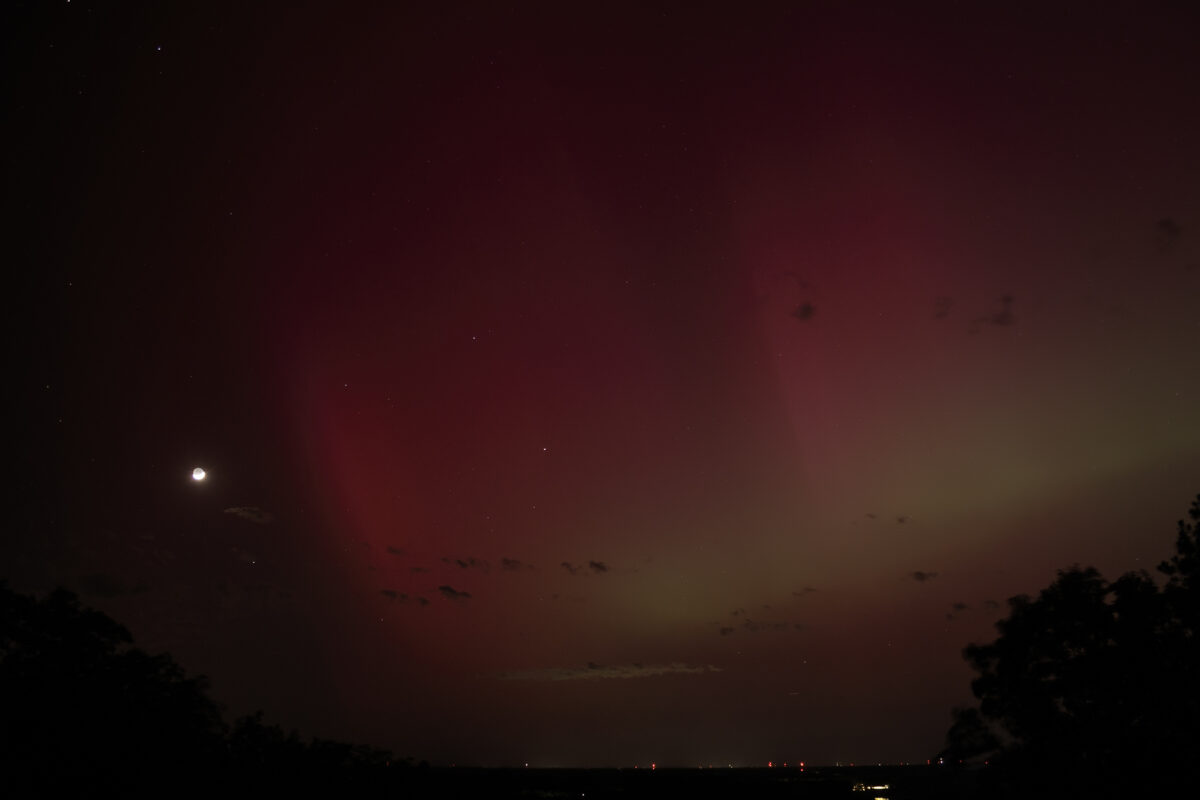



The aurora was bright enough to record video. The actual time elapsed in the video below is 3 minutes 45 seconds.
For thirteen minutes I watched in awe before coming to my senses and looking up to see how far the aurora was extending above the horizon. I was dumfounded to see it was through Ursa Major (the Big Dipper), past the zenith and into the southern sky!
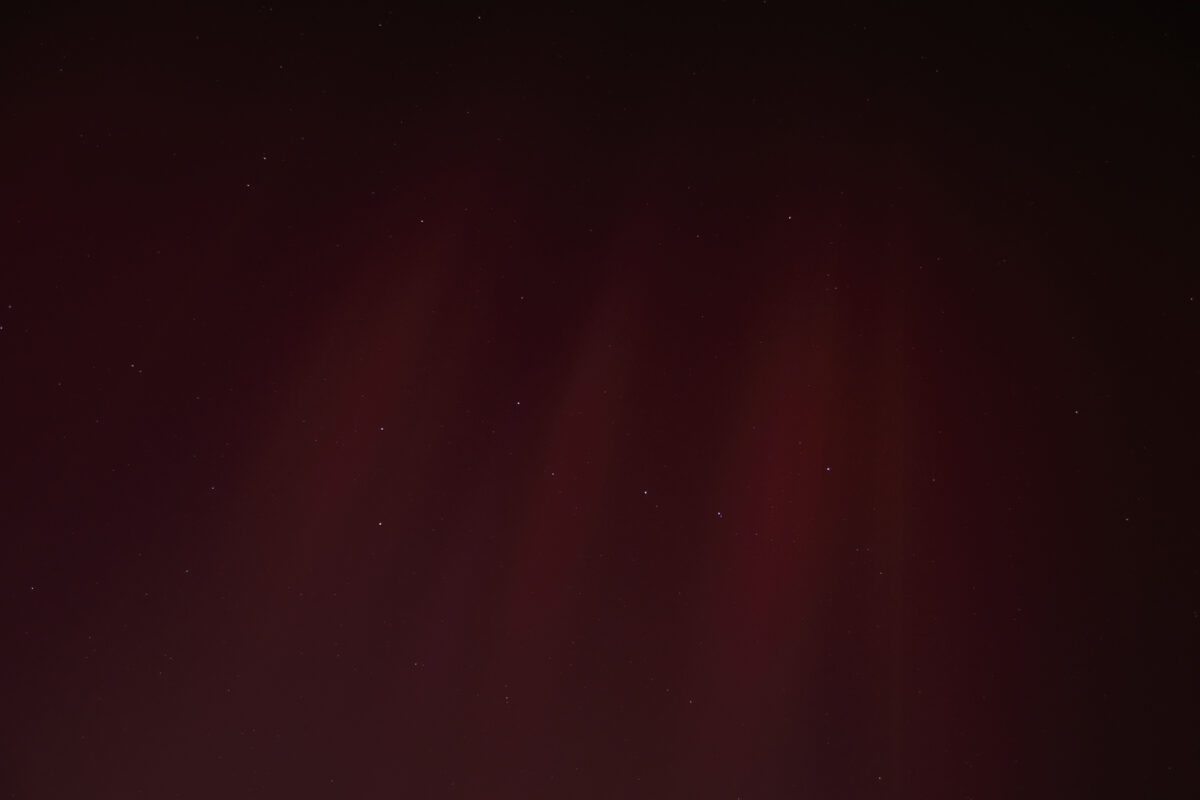
Up to this point I had been watching this all alone but now other skywatchers began arriving, no doubt inspired by all the photos that were flooding social media. There were lots of oohs and aahs. I continued photographing with a big smile. The first photo below is looking south.
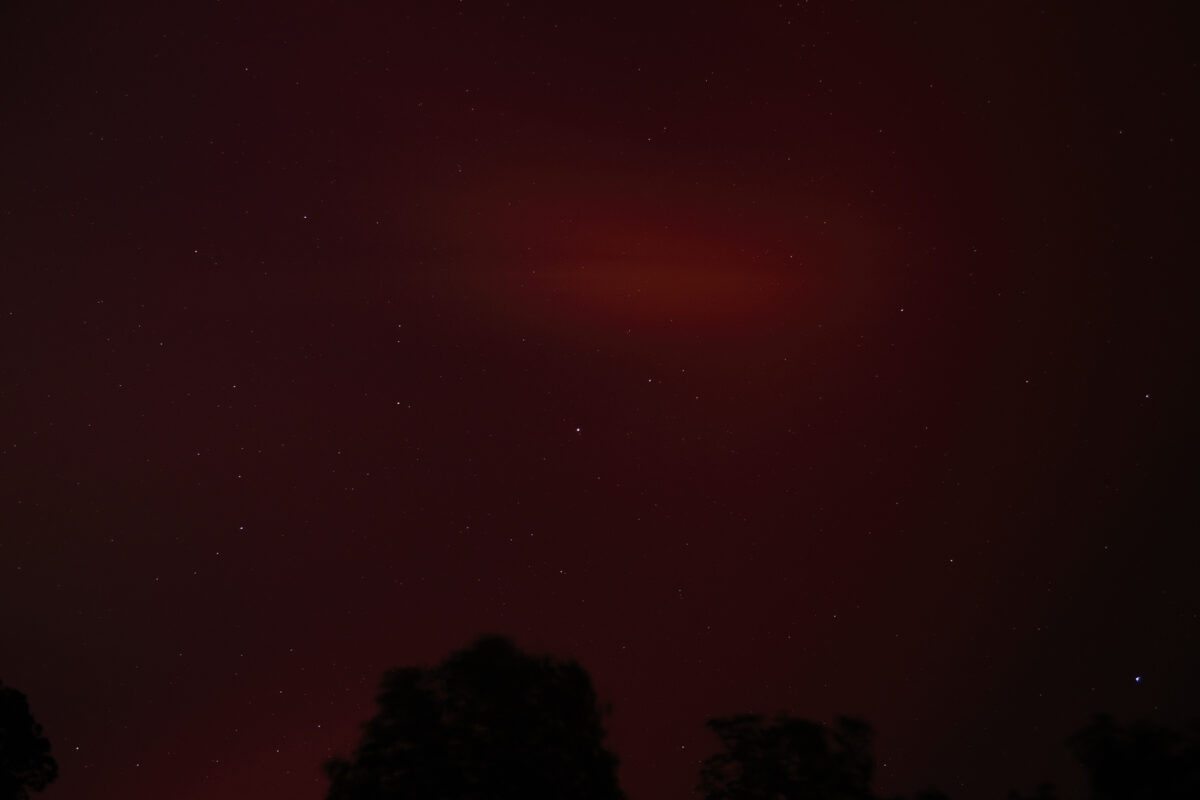

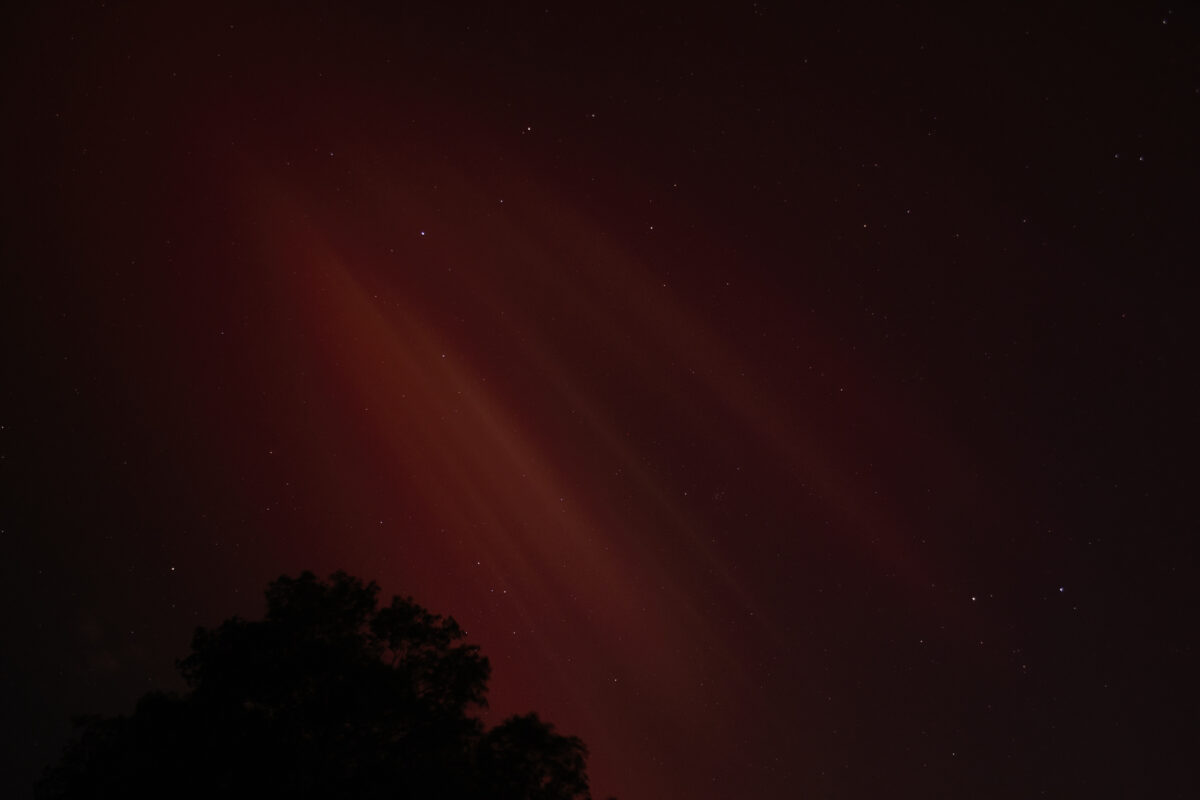
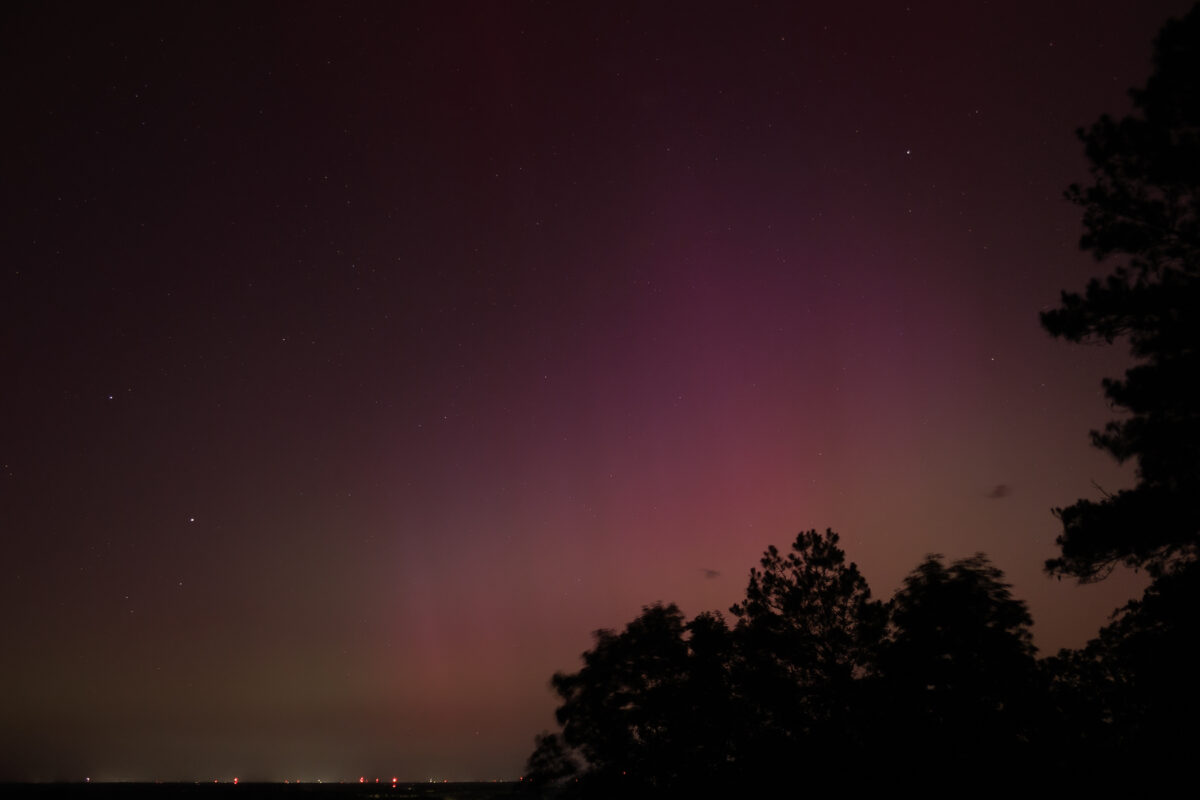

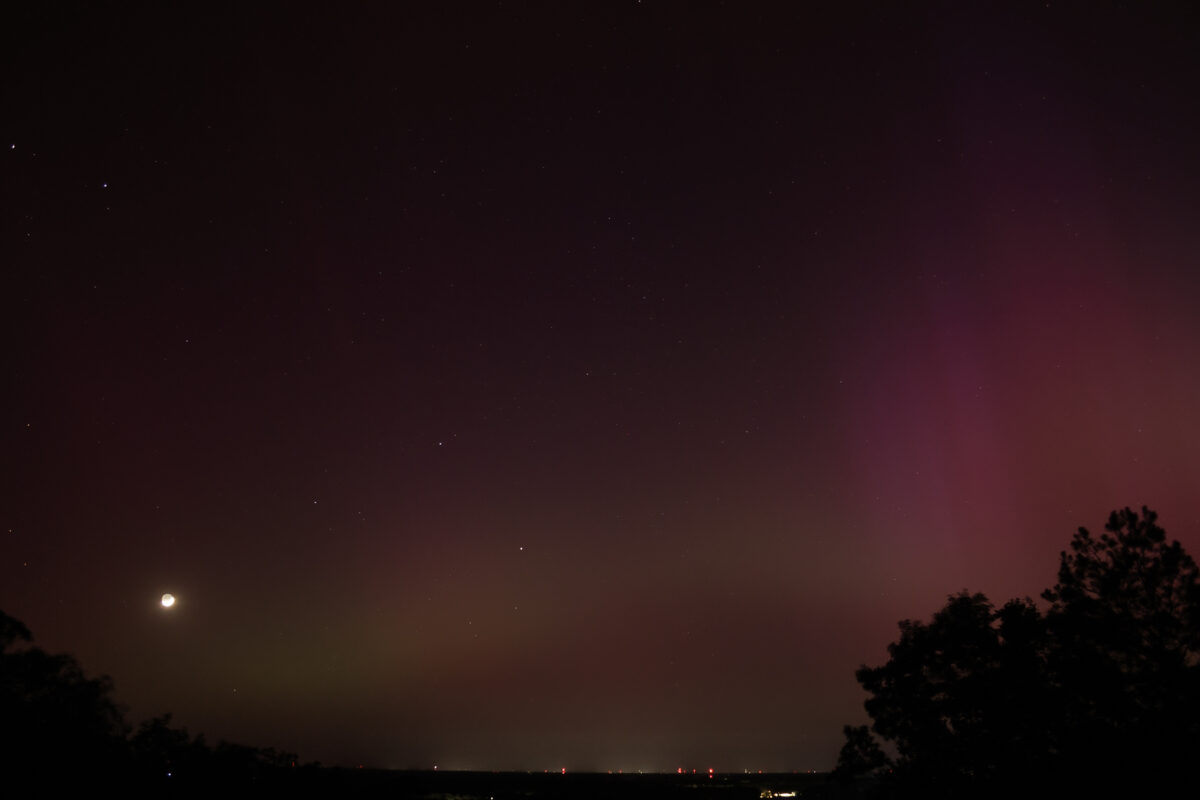
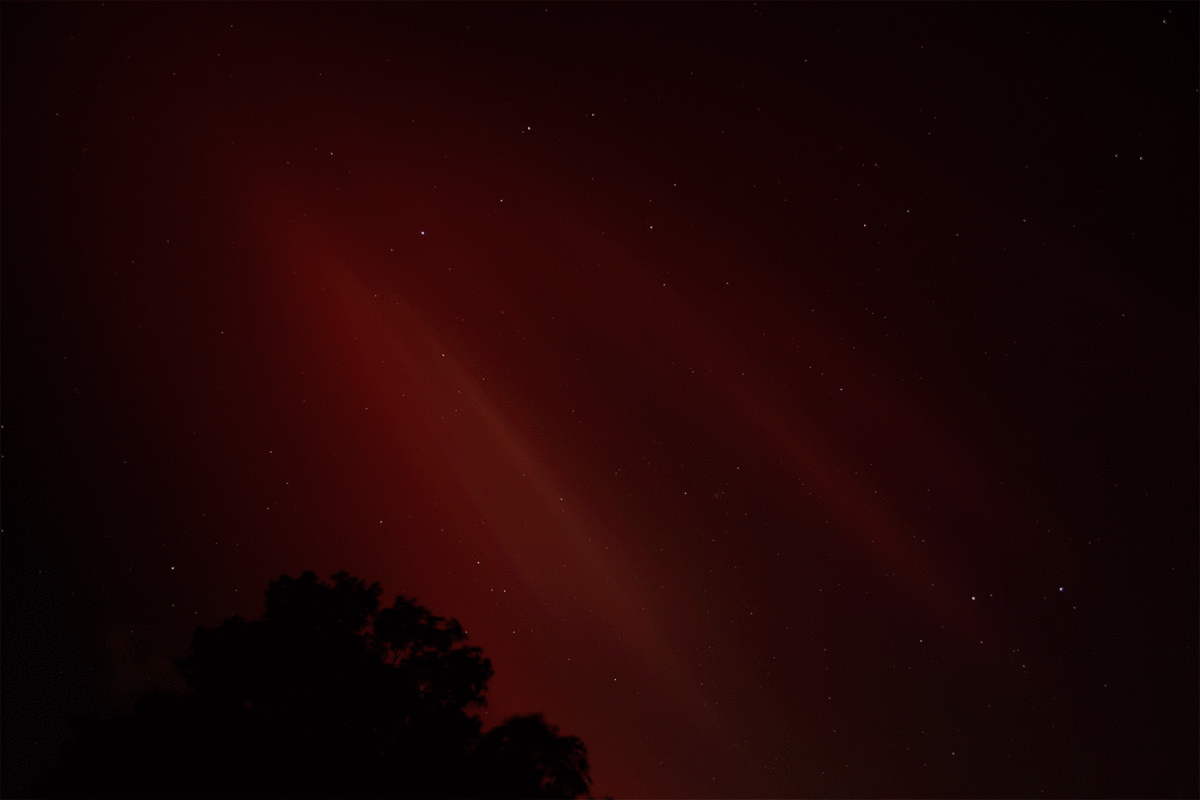
By 23:00 the overlook was getting crowded so I decided to give up my spot so others could see. On the drive home I noticed the other north-facing overlook in FDR State Park was full of skywatchers, as was the parking lot across from the Callaway Gardens Country Store. When I got home I took some photos from the backyard where only a faint red tint was visible.

The Show In Review
As it turned out the prediction of a severe geomagnetic storm was wrong. It ended up being an extreme storm, the first of its kind since 2003. The aurora was visible all the way down to the Florida Keys. In fact for the first time ever the aurora was seen in all 50 states!
So what’s next? AR3664 is now exiting stage right and will no longer be visible by Wednesday. Will it survive the trip around the backside of the Sun? That answer will come in a couple weeks. With the Sun approaching solar maximum in it’s 11-year cycle, things are highly active right now. Perhaps another storm of the century is just around the limb.

